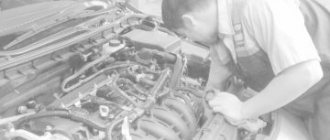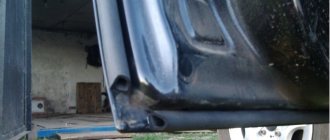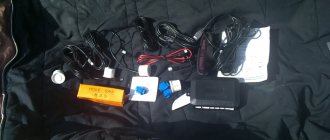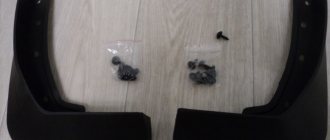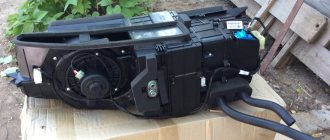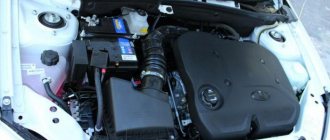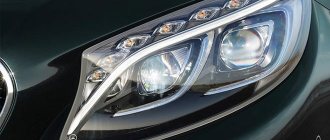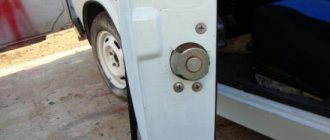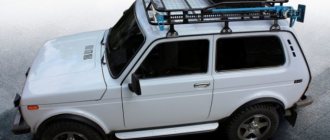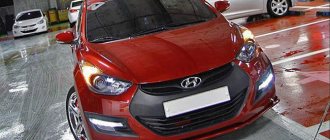What is parking sensors in a car?
The vast majority of modern motorists prefer this useful device. Very often, especially novice drivers, have difficulty parking their car. They struggle with anxiety and fear of harming their own or a nearby car, and all these worries are in vain if they have equipped their car with parking sensors.
Parking sensors are designed to help motorists in the most inconvenient and difficult situations - for example, when you need to park with your back to a wall or another car and there is no way to visually assess the distance to an obstacle. By installing parking sensors in your car, you will greatly facilitate the process of parking, even in the most inconvenient places, you will be able to protect your car from accidental damage, and yourself from waste associated with such troubles. Therefore, many people prefer the parking sensors comfortable parking system and know what it is firsthand.
A parking radar, or an acoustic parking system (APS), is installed to provide easier maneuvering and avoid collisions while parking and driving the vehicle. The “smart” system is able to recognize all objects that are in an area poorly visible to the driver, and those that are completely impossible to see from the driver’s seat. The system notifies the driver through sounds and/or graphics that the vehicle is approaching an obstacle, and the alerted driver performs the necessary maneuvers to avoid a collision.
The first parking sensors were equipped with high-class cars of very popular brands. This new invention immediately received positive responses from owners of expensive cars and became very popular. Now, thanks to large-scale production, parking sensors are installed by many manufacturers. If the car does not have parking sensors, then it can be installed without any problems at any car service center. If you have the skills to repair a car, or are familiar with maintenance, then you can carry out the procedure for installing parking sensors yourself, having previously selected the type of parking system you need.
How does the parking sensor work?
The parking sensor device is quite simple, and it can be divided into several components. These are an indication unit, a control unit and special sensors. There are models in which the control unit is single. In this case, the indicator unit can be either a buzzer or an LED or liquid crystal display.
So what is parking sensors, and what is its operating principle based on? The operation of an acoustic parking system is based on the properties of sound waves. Ultrasonic radar is able to correctly determine the distance from the car's bumper to the closest obstacle. The system transmits an impulse using a transmitting device; upon reaching an obstacle, it is reflected. The device receives the reflected signal, and with the help of a controller, based on the time it takes the beam to travel to the obstacle and back, calculates the distance to the obstacle.
Information about the distance between the vehicle and the obstacle is instantly displayed on the display. It is usually attached to the car's dashboard or rearview mirror. If desired, it can be mounted in any other place. The system is also equipped with speakers that warn the driver with sound. Typically, the parking sensors emit the first signals when the car approaches an object closer than 1-2 meters. If the obstacle is at a distance of 0.1-0.4 m, the signal does not stop until the reason for the system’s response is eliminated.
If you engage reverse gear and start moving backwards, the parking sensors also engage simultaneously with reverse gear. The system, with sensors mounted on the rear bumper, will receive power from the reversing light circuit.
If the car has corner or front parking sensors, the system is activated when the car is moving at low speed, namely up to 20 km/h.
Installing a parking radar is not difficult - usually a wire is laid along the car body, which connects the display unit with the sensors. In addition, there are wireless systems. This type of parking sensors is much more convenient to install than wired ones.
What are the features of using parking sensors?
Having studied enough information about the parking system and looked at the parking sensors in the photo, you have made your choice and installed the miracle device in your car. It should be remembered that technology needs human care. And in order for its operation to be trouble-free and correct, it is necessary to take into account the nuances listed below and try to prevent them. Problems in the operation of parking sensors can be created by:
- dirt, ice and snow stuck to the sensors;
- if the car is moving on an uneven road or on an incline;
- rough terrain can also cause misleading signals;
- increased noise;
- adverse weather conditions;
- radio;
- dents and holes in the asphalt;
- not closed sewer hatches;
- sharp or thin objects.
Be sure to take note of this and do not rely 100% on technology, because it cannot always ensure your safety.
The main prerogative of parking sensors is the ability to monitor areas that the driver cannot control from his seat, i.e. so-called “blind spots”. This will help avoid accidents and other difficulties for the driver on the road.
Autolikbez October 25, 2017
Not every driver is able to “feel” the dimensions of the vehicle and accurately drive close to various obstacles and other cars, which is quite important in urban conditions. An assistant in such a situation is a parking radar (parking sensors), which appeared in the design of imported cars back in the 90s of the last century. The task of the electronic device is to prevent a collision by giving a warning signal when approaching any object. What is parking sensors in a car and how it functions, read in this publication.
How does parking radar work?
Parktronic is a complex electronic system consisting of several main elements:
- control and signal processing unit;
- ultrasonic sensors mounted in elements of the car body (usually the front and rear bumpers);
- device for sound and visual warning of the driver.
Each sensor continuously sends an ultrasonic signal that is reflected by the surfaces of surrounding objects. If an obstacle is at close range, the device detects the reflection and transmits information to the control unit controller. The latter determines the distance to the obstacle by wavelength and response speed, after which it gives the appropriate command to the sound device and display.
How parking sensors of the simplest design work:
- Two sensors are installed in the rear bumper of the car, distributing ultrasound in a coverage sector of approximately 45° in front of them.
- When you back up and approach an obstacle within 2 m, the electronics beep the first sound.
- As you approach the object, the signal sounds more frequently, and at a distance of 30 cm from the surface it becomes continuous.
Types of systems
The parking sensor design described above is considered outdated and primitive. Two sensors built into the rear bumper are able to “see” only solid obstacles located behind the car. Objects in the form of poles and street trash cans that are shifted away from the center of the car may not be detected by the devices. The reason is that the area behind the vehicle is too narrow. There is no front collision insurance at all.
Therefore, the following types of parking radars are installed on modern cars:
- Budget version - 3 sensors in the rear bumper, one in the middle, two on the sides. Unfortunately, with such an arrangement, there are “blind” spots behind the car.
- Full coverage of the space without “blind” spots is provided by 4 ultrasonic devices mounted in the rear body kit at intervals of 40 cm.
- Two sensors in the front bumper and 4 in the rear. This system allows you to safely park in reverse and maintain a distance from large objects located in front.
- The most expensive version - eight devices (4 pieces in each body kit) is relevant for novice drivers. Parking sensors fully control the space in front and behind the car.
Note. To prevent sound or voice signals from distracting the driver while driving, a group of tracking devices has been disabled, and in some modifications one specific parking sensor can be deactivated.
The screen with a scale does not give the driver a clear picture of what is happening behind and in front of the vehicle. It indicates approaching an obstacle and signals when the distance to the surface of the object becomes dangerous. The full picture can be seen on the liquid crystal display installed on the center console of many modern cars.
The display receives the image from at least two cameras combined with ultrasonic sensors. A marking grid is superimposed on the picture, using which the driver can easily determine the remaining distance to the object. Reversing is also accompanied by voice prompts (the function can be turned off if necessary). The parking sensors are designed in such a way that they are activated after switching to reverse gear; the system does not function while driving.
The latest modifications of electronic devices are equipped with several additional functions:
- the screen shows not only a picture with a superimposed grid, but also the trajectory of the car;
- instead of a display, the image is displayed directly on the windshield (the so-called projection), the driver does not need to look from the road to the screen;
- display of various useful data - date, current time, mileage and outside temperature.
Reviews
| № | Positive |
| 1. | Gennady: I bought the Granta Liftback in the Lux Premier configuration, with a parking sensor installed by default. Its functionality is enough for me, I’m not going to change it. |
| 2. | Vasily: it’s a pity that the budget versions are not equipped with DP. I installed it myself, fortunately the process is not complicated. My recommendations to car owners. |
| 3. | Vyacheslav: installed the DP on the Grant, it works properly, quickly and accurately detects an obstacle on the path in reverse. |
| 4. | Alexander: I didn’t remove the standard parking sensors on Grant, I just moved the speaker from the trunk to the cabin so that the signal could be heard louder. |
| 5. | Ivan: I entrusted the installation of the DP to the masters from the service station, they did it quickly and efficiently, there are no complaints. I've been actively using it for two months now. I recommend it to motorists. |
| 6. | Gennady: special thanks to the manager of the car store for recommending the parking sensors. Installed it myself last weekend. There are no complaints, it works properly. |
| Negative | |
| 1. | Vladimir: I’m not happy with the standard DP on the Grant Liftback in the Lux Premier configuration. It does not work correctly, it determines the distance incorrectly, the signal sound is quiet. |
| 2. | Sergey: I’m dissatisfied with the quality of the sensors, within a month I already replaced the second one. They work through one, the signal is weak. |
| 3. | Vladlen: when purchasing the sensors, they assured that they would work properly. As a result, after two weeks they failed. I will replace them with new ones. |
Conclusion
READ How to set the weather on Lenovo p780
The parking sensors accessory is necessary for those drivers who often use the car in urban areas, in conditions of limited visibility. When purchasing a gadget, pay attention to its packaging and the presence of an instruction manual.
You can install parking sensors on the Grant Liftback yourself. The algorithm is intuitive; it is not necessary to contact a service center.
Follow safety rules, use insulation and corrugated hoses for laying wires.
Source
Recommendations for choosing and installing parking sensors
Manufacturers do not provide parking radars on budget models of passenger cars. This is not a problem for a car enthusiast who is concerned about safe driving: parking sensors can be purchased and installed yourself. It is necessary to purchase an installation kit, which includes sensors, a small remote display and an electronic control unit with wires.
Note. A screen in the center console is found on many cars that are not equipped with parking electronics. To connect the display to the controller, you will have to contact a dealer car service - doing this yourself is quite difficult. It's easier to install a remote indicator.
When choosing parking sensors with an ultrasonic operating principle, consider the following recommendations:
- There are kits with overhead (glued) and mortise sensors. It is better to choose the second option, although a similar set is more expensive. Experience shows that cheap stick-on devices often fall off and come off.
- Take a kit that includes at least 4 ultrasonic scanners installed in the rear body kit. If you want to monitor the front of your vehicle, buy a set of six sensors.
- Always relevant advice: try not to buy cheap products made in the Republic of China.
Before installing parts, read the instructions and diagram included with the installation kit . Prepare a drill with a core drill, which can be used to make neat holes for each parking sensor. During the connection process, you may need a tester or multimeter to test the wires.
The most difficult moment is drilling holes and attaching ultrasonic elements. Ideally, you need to remove the bumper, mark the mounting points at intervals of 30–40 cm and make holes. Observe the direction of drilling from outside to inside so as to minimally cling to the paintwork. Then attach the sensors and install the body kit on the car.
Lada Granta AT ICE-MAN › Logbook › Installing parking sensors
— 4 sensors — control unit — remote screen — leaflet with description — cutter — connecting wires, double-sided tape.
After reading several driver's manuals and consulting in the comments, I decided to install without removing the bumper (although many advise that it is easier to install by removing). The following fastening elements of the rear bumper were unscrewed: - 4 self-tapping screws on top (not useful, extra work - don’t unscrew them) - 3 bolts from below (I highly recommend it to make it more convenient to lay the wires and tie the wires from the sensors into the harnesses with ties) Wires to the interior (trunk ) are inserted through a rubber plug under the left headlight (rear view) through which the factory made an input for illuminating the license plate. squeezed it inside the trunk to make 4 additional holes. I took the included cutter and inserted it into the drill. I pasted a strip of masking tape onto the bumper and marked the drilling points along it:
How does parking sensor work?
The operating principle of the parking radar.
Parking radar sensors are its “working” sensitive elements, which are installed on the rear and front bumper. Sensors detect obstacles at distances from 2 m to 0.2 m, which the driver is notified about through signals and display.
Parking radar sensors operate using ultrasonic signals that are reflected from surfaces around the car (the body of another car, a tree stump, a pole, etc.). Sensors record these reflected waves and transmit information to the electronic parking sensor unit. In the block, the information is processed (the distance to the obstacle is calculated based on the wavelength), and then displayed on a scale in the form of bars, or on a display in the form of numbers. At the same time, a sound signal is given using the built-in beeper. The closer the distance to the obstacle, the more often the sound signal sounds. If the distance is less than 30 cm, then it becomes continuous.
If an obstacle is in the zone of a possible collision, the driver hears a signal and can see on the parking sensor display the distance to the obstacle in meters or centimeters. However, if the number of sensors is insufficient, the parking sensor may “not notice” objects that are thin or that fall into the “dead zone”.
Typical characteristics of parking sensors
| Distance range | 0.3 – 2.0 m. |
| Voltage | 9-12 V |
| Sound signal | 80 dB |
| Working temperature | -35C + 45C |
| Possibility to mute sound | Eat |
| LED display with built-in speaker | Depending on the configuration |
| Sound notification when an obstacle is detected | Eat |
| Waterproof sensors with connectors | Eat |
| DOUBLESENSOR technology (reduction of blind spots) | Eat |
| Two types of obstacle indication | Eat |
Preparatory stage before self-installation of parking sensors on the Lada Granta Liftback
Required tools and materials:
- parking sensor complete with a cutter for cutting holes in the bumper;
- rags, masking tape for covering the perimeter of the rear bumper;
- a set of car tools for removing the bumper.
Which parking sensor is better to choose?
Four sensors in the rear bumper of a car
When choosing parking sensors, you first need to focus on the number of sensors. Models currently available for:
- Two or three sensors. Parking radars with 2 or 3 sensors are generally considered to be outdated and uninformative. To cover all possible blind spots, there must be at least four parking sensors in the rear.
- Four sensors. All of them are installed on the rear bumper. And this amount is sufficient to “see” everything that is happening behind the car. Parking sensors with 4 sensors are very popular due to their low price, but do not provide information about obstacles ahead.
- Six sensors. Most drivers consider parking sensors consisting of six sensors (the so-called “all-round” parking sensors) to be optimal in terms of the combination of price and information content. Four are installed on the rear bumper, approximately 40 cm apart. Two more are mounted in the front bumper. This installation scheme for parking sensors has good information content and reliability. Modern models have the option of turning off sensors in the front or rear. If desired, the driver activates sensors only on the front or rear of the vehicle.
- Eight sensors . These are expensive models of parking sensors. But many novice drivers choose them, since parking radars with eight sensors detect any obstacles. The use of parking sensors with a large number of sensors has some peculiarities. Often, when driving, an overly sensitive radar distracts the driver. Therefore, devices with eight or ten sensors turn on for approximately 20 seconds at the beginning of movement. Then they are activated only when braking. Some models can be turned off by the driver using a button.
Review of Manufacturer Prices
| Name / article number / catalog index | Price, rub.) |
| SPY LP-121 with sensors (016961) | from 1700 |
| SPY LP-213 (016963) | —/— |
| CYCLON PS4 K9 (129255) | from 800 |
| CYCLON PS4 K8 (129254) | —/— |
| SPY LP-016 (016959) | —/— |
| Falkon 2612 (064387) | from 950 |
| —/— (064388) | —/— |
| CYCLON SK-4T (129257) | —/— |
| SK-5T (129256) | —/— |
| ST-5T1 (129259) | —/— |
| LP-113 (016960) | —/— |
| Falkon 2680 (064399) | —/— |
| Galaxy PS4-01A LCD with sensors (045091) | from 1700 |
| CYCLON AV-4W (129268) | —/— |
| Galaxy PS4-01A LCD (064429) | —/— |
| CYCLON LW-4WS (129270) | —/— |
| LV-8T (045092) | from 2500 |
| PS8-01A LCD (064427) | —/— |
| Parkcity Madrid (017586) | —/— |
| PS8-01B LCD (064411) | —/— |
| Brees Longhorn H-065-6 (016956) | from 1900 |
| ParkMaster 8-DJ-29 (054347) | —/— |
| 8-DJ-31 (054986) | —/— |
| 8-DJ-45 (054871) | —/— |
| 8-DJ-87 (054235) | —/— |
| 8-DJ-02 (054641) | —/— |
*prices are current as of October 11, 2018
Recommendations for choosing a manufacturer
There is a wide range of products on the market, but not always of high quality. Carefully check the package contents and the presence of a warranty card. Be sure to request the provision of a sales receipt as a guarantee of the legality of the transaction and the possibility of return if defects are detected.
